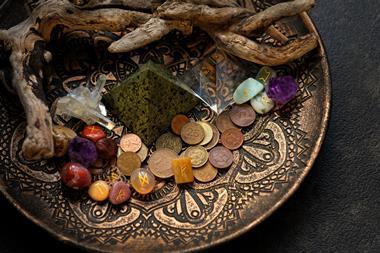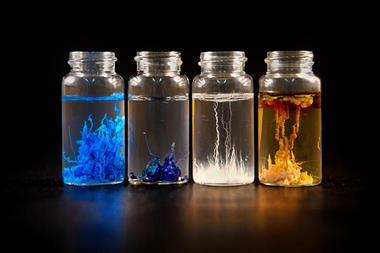Add a metal salt to sodium silicate solution (waterglass) and it will make brightly coloured spirals, fronds and ‘petals’ of insoluble precipitate. These plant-like formations – known as chemical gardens – were discovered more than 300 years ago, yet scientists still don’t know exactly how factors such as buoyancy, osmosis and reagent concentration influence their growth.
Now, a team led by Anne De Wit at the Free University of Brussels has devised a way to study chemical garden growth in greater detail by confining the reactions to very thin, almost 2D, ‘slices’. They injected cobalt chloride into a thin layer of waterglass trapped between two clear acrylic plates, and observed the different shapes the precipitates made under different conditions.
They showed that the concentrations of both reagents and the rate of injection had a large effect on the gardens’ shapes – for example, when one reagent is far more concentrated than the other, a circular flower-like shape with lobed petals forms, whereas both reagents being highly concentrated resulted in long, thin filaments, and intermediate concentrations gave thicker ‘worms’.
As well as chemical gardens themselves, the group say their techniques could be used to improve understanding of similar systems, such as self-assembled nanostructures or chimneys at hydrothermal vents.
References
F Haudin et al, Proc. Natl. Acad. Sci. USA, 2014, DOI: 10.1073/pnas.1409552111






















No comments yet